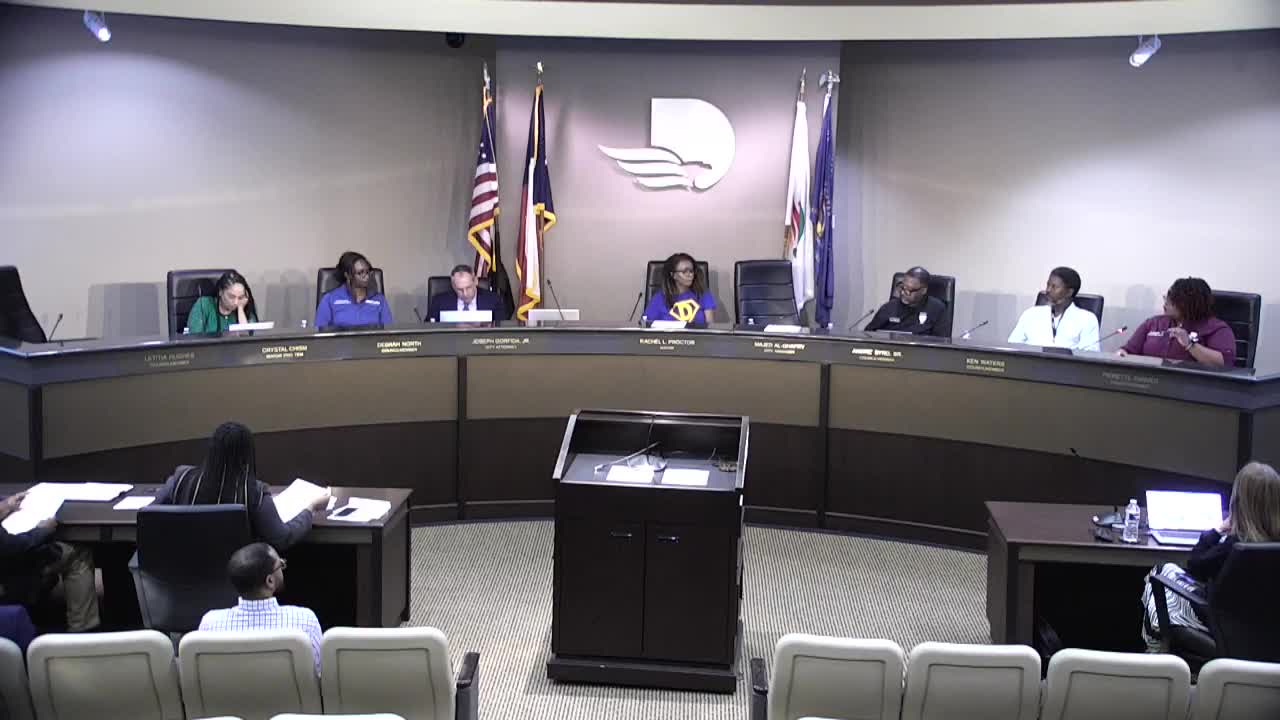DeSoto City Council Approves 2025 Transportation Design Manual for Improved Mobility
August 05, 2025 | DeSoto, Dallas County, Texas
This article was created by AI summarizing key points discussed. AI makes mistakes, so for full details and context, please refer to the video of the full meeting. Please report any errors so we can fix them. Report an error »

In the heart of DeSoto's city hall, council members gathered under the warm glow of overhead lights to discuss pivotal changes that could shape the future of their community. Among the key topics was a request for a comprehensive list of vehicle changes made throughout the year, highlighting the council's commitment to transparency and accountability in city operations. A council member expressed the need for clarity on vehicle purchases and amendments, noting that the city had previously received monthly updates on its fleet. The council agreed to resume these updates, ensuring that all members are informed about the city's vehicle management.
As the meeting progressed, the focus shifted to a significant agenda item: the approval of a new transportation design manual set to take effect on October 1, 2025. City Engineer MD Hosan presented the updated manual, which aims to replace the outdated 2005 pavement design manual. This new document promises to modernize the city’s approach to transportation infrastructure, incorporating enhanced safety measures, improved traffic signal guidelines, and compliance with the Americans with Disabilities Act (ADA).
The updated manual introduces a more detailed classification system for roadways, specifying design vehicles and addressing multimodal transportation needs, including provisions for bicycles and pedestrians. It also emphasizes sustainability and green infrastructure, aiming to reduce long-term maintenance costs through better design practices. The council members engaged in a thorough discussion about the manual, seeking to understand its implications and ensuring it aligns with the city’s comprehensive plan.
Questions arose regarding the manual's consistency with ongoing projects, such as those on Hampton Road, and whether it had been adequately reviewed by the planning and zoning commission. While the manual was deemed technical and not requiring extensive public input, the city staff confirmed that developers had been consulted during its drafting process.
As the meeting drew to a close, the council expressed a collective commitment to adopting the new transportation design manual, recognizing its potential to enhance the safety and functionality of DeSoto's roadways. With the promise of a more integrated and user-friendly transportation system on the horizon, the council left the meeting with a renewed sense of purpose, eager to see how these changes would unfold in the coming years.
As the meeting progressed, the focus shifted to a significant agenda item: the approval of a new transportation design manual set to take effect on October 1, 2025. City Engineer MD Hosan presented the updated manual, which aims to replace the outdated 2005 pavement design manual. This new document promises to modernize the city’s approach to transportation infrastructure, incorporating enhanced safety measures, improved traffic signal guidelines, and compliance with the Americans with Disabilities Act (ADA).
The updated manual introduces a more detailed classification system for roadways, specifying design vehicles and addressing multimodal transportation needs, including provisions for bicycles and pedestrians. It also emphasizes sustainability and green infrastructure, aiming to reduce long-term maintenance costs through better design practices. The council members engaged in a thorough discussion about the manual, seeking to understand its implications and ensuring it aligns with the city’s comprehensive plan.
Questions arose regarding the manual's consistency with ongoing projects, such as those on Hampton Road, and whether it had been adequately reviewed by the planning and zoning commission. While the manual was deemed technical and not requiring extensive public input, the city staff confirmed that developers had been consulted during its drafting process.
As the meeting drew to a close, the council expressed a collective commitment to adopting the new transportation design manual, recognizing its potential to enhance the safety and functionality of DeSoto's roadways. With the promise of a more integrated and user-friendly transportation system on the horizon, the council left the meeting with a renewed sense of purpose, eager to see how these changes would unfold in the coming years.
View full meeting
This article is based on a recent meeting—watch the full video and explore the complete transcript for deeper insights into the discussion.
View full meeting
